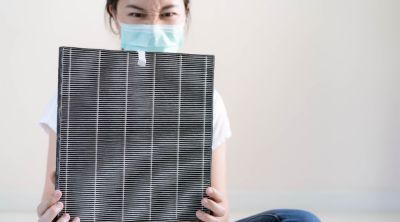Are you among the millions trying to keep your home cool during this record-shattering heat?
Picture this…
It’s a hot summer day, and you’re trying to stay cool, but your home is just as hot as it is outside. Your family can’t bear the heat any longer, so you turn to the air conditioner, only to find that it’s not working.
Keep Your Home Cool With These Seven Tips
What can you do to keep your home cool and comfortable during the year’s hottest months without breaking the bank? First, book an air condition service. When it’s up and running efficiently, here are ways to keep your home cool:
1 – Keep Up With The AC Maintenance
Your air conditioner is like any other appliance in your home; it needs regular maintenance to run efficiently. It works harder than usual during the hot summer months to keep your home cool. Have it serviced by a professional at least once yearly.
The professional will check for any issues and make repairs as needed. They will also clean, lubricate, and adjust the parts. It enables the unit to run more efficiently, using less energy and saving money.
2 – Change Your Air Filter
Change your air filter every few months or as often as needed. A clean air filter allows proper airflow enabling the AC unit to run more efficiently. It also improves indoor air quality.
Choose a filter that fits your unit and your needs. A higher MERV (minimum efficiency reporting value) rating means the filter will capture smaller particles; however, it can also restrict airflow. Talk to an HVAC professional to find the right air filter for your unit.

3 – Keep Your Home Cooler With Ceiling Fans
Ceiling fans assist your air conditioner by circulating cool air throughout your home. They use less energy than your AC unit, saving you money on electric bills. Make sure the blades move clockwise to push cool air.
Don’t use them when nobody is in the room to avoid wasting energy.
4 – Open Your Windows at Night
Take advantage of the cooler nighttime temperatures by opening your windows at night. Let the cool air in and turn off the AC. Close windows and blinds during the day to keep the heat out. Choose curtains or blinds that are light in color to reflect sunlight.
Also, consider adding awnings to keep the sun from shining directly into your windows.
5 – Use Insulation to Keep Your Home Cool This Summer and Toasty in the Winter
Proper insulation keeps cool air in and hot air out. It also reduces noise and makes your home more comfortable. Check the attic, walls, floors, windows, and doors for any gaps or cracks. Use weather-stripping, caulk, or insulation to seal cracks.
If your windows are too old, replace them with more energy-efficient ones. Choose windows with a low U-factor and solar heat gain coefficient (SHGC). These ratings indicate how well a window prevents heat from entering or escaping your home.

6 – Use Kitchen and Bathroom Exhaust Fans
Cooking and showering add heat and humidity to your home. Use kitchen and bathroom exhaust fans to remove this heat and humidity. Ensure the fans vent outside for the hot air not to recirculate back into your home. Carry out activities that generate heat and humidity during cooler hours to minimize the use of exhaust fans.
7 – Replace The AC Unit When It’s Too Old or Breaks Down Often
An old or inefficient AC unit will use more energy to cool your home, leading to higher electric bills. It will also break down more often; you cannot entirely depend on it to keep your household cool.
When it’s time for a replacement, get a unit that is the right size for your home and has a high Seasonal Energy Efficiency Ratio (SEER) rating. This rating indicates how much energy an AC unit uses to cool your home. The higher the SEER, the more efficient the unit.
The Takeaway: Follow These Tips to Keep Your Home Cool This Summer
Beat the heat this summer by following these tips. They’ll help you keep your home cool without breaking the bank. Don’t hesitate to call experts when you detect inefficiencies or problems with the system. Running a defective AC unit can cause more damage and cost you more money in repairs. It’s also a safety hazard as it can lead to fires.

